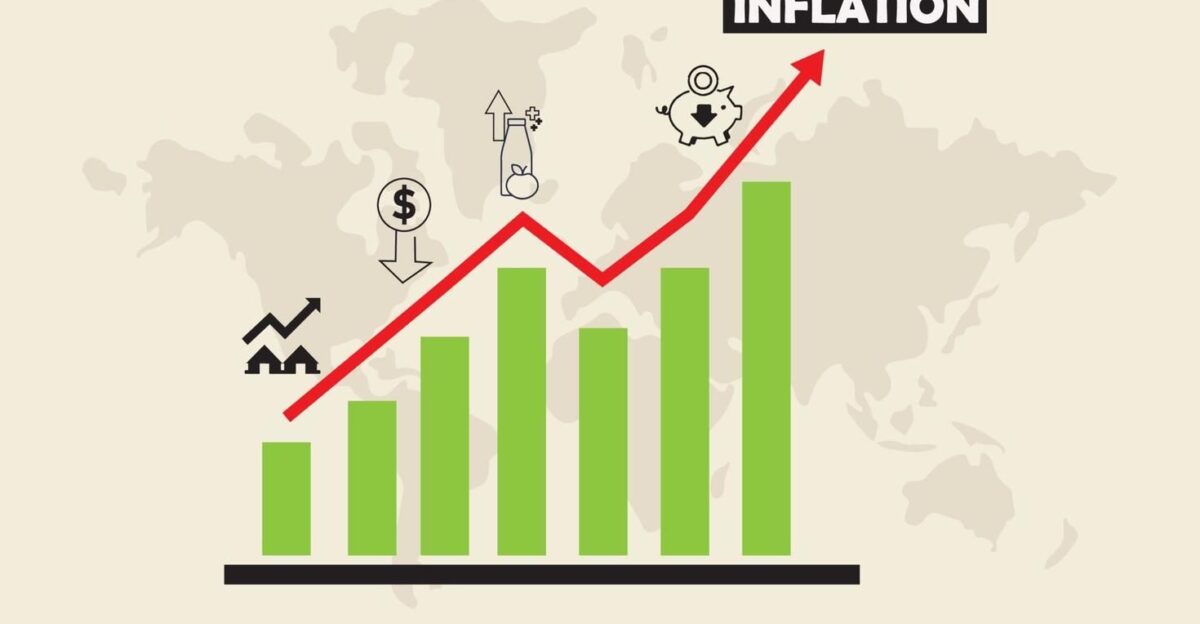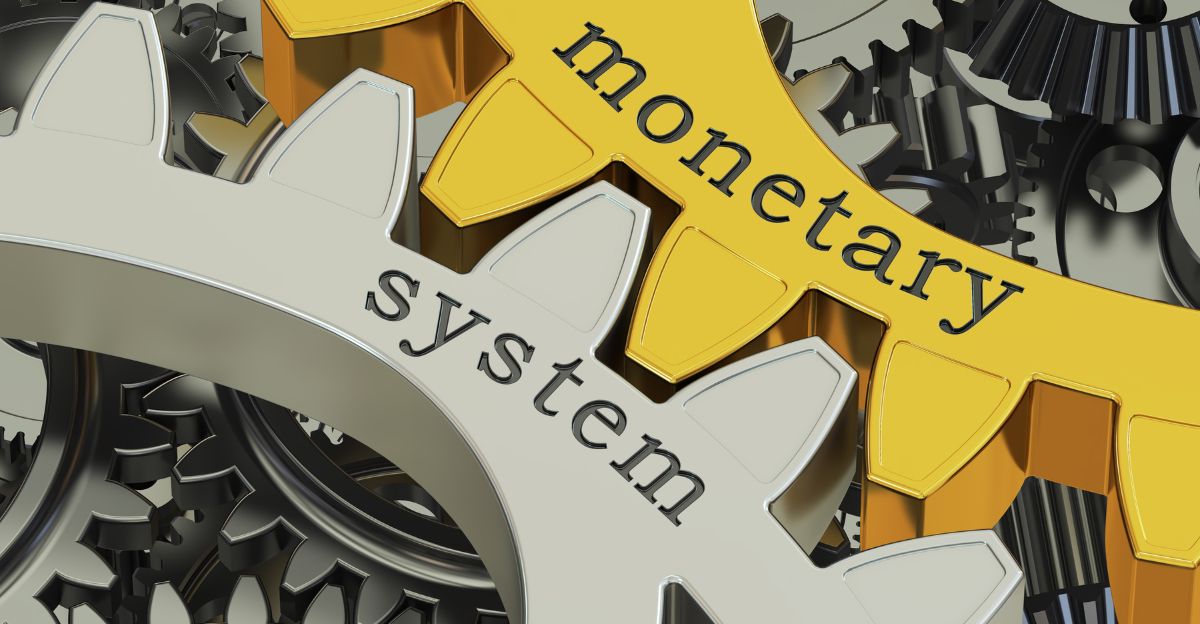
The US dollar’s position as the world’s primary reserve currency supports international investment flows, trade, and global financial stability. Investor anxiety results from a declining reserve dollar, which indicates a decline in confidence in its stability and strength. Wide-ranging financial repercussions result from this decline’s impact on capital flows, currency markets, and portfolio valuations.
Investors tremble not just out of fear but also because the dollar’s decline jeopardizes the fundamental guarantees of liquidity, risk assessment, and wealth preservation that have been built up over many years. The Bretton Woods system, which established an “exorbitant privilege” whereby the United States financed deficits by issuing currency that other countries relied on, historically solidified the dominance of the US dollar after World War II.
The Dollar’s Ascent and Fragility

Following Bretton Woods in 1944, the US dollar supplanted the British pound sterling as the most widely used currency in the world. It supported the global monetary order and was tethered to gold. However, issues with excessive dollar issuance during the Vietnam War and domestic spending arose in the 1960s, which resulted in the Nixon shock of 1971 and ended the dollar’s gold convertibility.
Although volatility was introduced by this shift to floating exchange rates, dollar primacy was maintained. Historical lessons from previous reserve currencies, such as the Dutch florin, demonstrate how fiscal deficits and poor policy decisions can quickly undermine reserve status. As global geopolitical changes and emerging alternatives challenge the dollar’s hegemony, its journey from gold-backed stability to fiat reliance highlights vulnerabilities today.
Why Fear Is Aroused by a Weaker Dollar

Changes that threaten the dollar’s reputation as a “safe haven” elicit strong emotional reactions from investors. Fear of capital erosion arises from currency weakness, which is frequently linked to inflation, political unpredictability, or fiscal irresponsibility.
Many international transactions and investments depend on the stability of the dollar because of its role as a global reserve. Investor confidence in US assets is put to the test as the dollar declines, raising perceived risk and leading to defensive rebalancing towards non-dollar assets. Uncertainty surrounding US monetary policy and geopolitical tensions exacerbate the psychological impact, prompting flight reactions and challenging conventional investment paradigms.
Avoid Investing in Dollar-Denominated Assets

As a sign of declining confidence, central banks and sovereign wealth funds have been shifting their reserves away from the dollar and toward other assets and currencies in recent years. With emerging reserve currencies like the euro, Chinese renminbi, and even “smaller” currencies gaining ground, the International Monetary Fund reported a drop in dollar holdings.
Trade realignments, technological advancements that facilitate currency trading, and geopolitical strategies are the main drivers of this diversification. Investors are forced to reconsider portfolio allocations and risk management frameworks in a less dollar-centric world as a result of these changes, which put pressure on the dollar’s reserve dominance.
Economic Consequences for Investing

Higher inflation, rising commodity prices, and higher interest rates are all consequences of a declining dollar, and they all reduce investment returns. These macroeconomic effects result in a decline in real wealth and a reduction in purchasing power for investors, particularly those with dollar-centric portfolios.
Additionally, currency conversions result in lower dollar-denominated income for foreign investors, which exacerbates capital outflows. Investor caution is dominated by the broader economic volatility and policy uncertainty stance, even though specific industries and multinational corporations profit from a weaker dollar through export competitiveness.
The Function of American Monetary and Fiscal Policy

Prolonged fiscal deficits and post-pandemic stimulus are two examples of excessive deficit spending that weaken the dollar by expanding supply without corresponding economic growth. When combined with changes in Federal Reserve monetary policy to fight inflation, the dollar’s future becomes uncertain.
Concerns about prolonged currency depreciation are stoked by opaque or inconsistent policies, which increase investor mistrust. Investors must look for alternatives and hedge strategies as the “exorbitant privilege” that formerly permitted the United States to borrow money at a low cost is in jeopardy.
Impacts of the Second Order on International Financial Markets

Global capital markets are affected when the reserve dollar declines. Refinancing risks are higher for nations that depend on dollar-denominated debt if the dollar unexpectedly rises once more. While emerging markets may experience fiscal leeway during periods of depreciation, they also face risks of capital flight and inflation.
Currency wars and competitive devaluations could get worse on a global scale, splintering trade partnerships and making cross-border investments more difficult. Increased volatility, currency mismatches, and geopolitical risks complicate portfolio management and increase the likelihood of downsides for investors.
Dollar Weakness Possibilities

Historical case studies indicate that periods after large currency devaluations can result in robust stock market recoveries, despite popular panic. Temporary mispricings brought on by investor panic present opportunities to purchase both domestic and foreign stocks. Commodities, technology, and emerging markets that are linked to international trade cycles might do better.
There are ways to profit and hedge during periods of dollar weakness by strategically diversifying a portfolio into non-dollar assets like gold, foreign stocks, and cryptocurrencies.
The Reserve Currency Stability Triangular Model

A triangular model that takes into account financial market depth, geopolitical influence, and fiscal restraint can be used to analyze reserve currency strength. Geopolitical power guarantees trust and the enforcement of financial agreements; fiscal restraint guarantees currency stability; and deep financial markets provide safety and liquidity. All three pillars have long been strong points for the US dollar.
Investor discomfort and flinch reactions at changes in reserve currency dynamics can be explained by the erosion of this tripartite balance brought on by growing fiscal unrest, geopolitical challenges, and financial innovations that disrupt traditional capital flows.
Insights from the British Pound and Dutch Guilder

There are instructive parallels between the decline of the British pound sterling in the 20th century and the Dutch guilder in the 17th and 18th centuries regarding the depreciation of reserve currencies. Due to changing geopolitical realities, imperial overreach, and poor financial management, both lost prestige. Investors who fled these currencies had to deal with wealth loss, market volatility, and a readjustment of international trade patterns.
Crucially, these declines were slow but unavoidable, characterized by shifting international alliances and recurring loss of confidence. This trend is echoed by the declining value of the dollar today, indicating that investors’ anxiety has deep historical precedent and that their hesitancy is a reasonable response to the prospect of systemic monetary change.
Geopolitical Division and Emerging Monetary Groups

The development of new monetary blocs oriented along regional and ideological lines and the emergence of geopolitical fragmentation occur at the same time as the dollar’s decline. This change is emphasized by emerging economies’ attempts to dedollarize trade, changing EU financial policies, and tensions between the US and China.
Investors now face a more disjointed global currency system, which raises geopolitical risk premiums, complicates hedging strategies, and increases transaction costs. The universality of the dollar is threatened by the growing use of sanctions and alternative payment methods as geopolitical instruments. Investor patterns developed over decades of dollar dominance are upset by this fragmentation, which raises portfolio volatility and raises concerns about the long-term stability of global finance.
Alternatives to Technological Disruption: Cryptocurrencies and Digital Currencies

From centrally issued digital currencies (CBDCs) to decentralized cryptocurrencies, technological advancements in currency bring previously unheard-of variables to the reserve currency landscape. Despite their volatility, cryptocurrencies like Bitcoin appeal to investors seeking diversification because they challenge the idea of state-backed currency with borderless, programmable money.
The goal of CBDCs, which were created by major economies like the EU and China, is to improve monetary sovereignty by establishing interoperable digital payment systems and avoiding dollar dominance. Although these technologies are still in their infancy, they raise strategic concerns for investors about risk, liquidity, and regulatory uncertainty. This makes portfolios that have historically been anchored to the dollar more cautious and encourages tactical shifts toward digital assets.
Strategies for Investor Hedging in a Weakened Dollar Environment

Investors are implementing complex hedging strategies that prioritize currency, asset class, and geographic diversification in response to growing dollar uncertainty. Gold, foreign stocks, commodities, and emerging market assets are increasingly included in portfolios as a hedge against inflationary pressures and dollar depreciation.
Derivatives and tactical currency trading are two more ways to control exposure. This intricacy reflects a broader understanding of structural changes and the necessity of safeguarding against asymmetric risks brought on by international monetary instability. Investors’ hesitancy is highlighted by the increased strategic approach, which shows their proactive attempts to move with agility and foresight through a less predictable dollar environment.
How American Multinationals and Exporters Modify

In addition to posing systemic risks, a declining dollar helps US exporters and multinational corporations by lowering the cost of American goods and services for overseas consumers and boosting profits when converted back to dollars.
To take advantage of these dynamics, many businesses proactively modify their pricing plans, supply chains, and foreign exchange risk management. These business benefits do not, however, completely allay investor worries about inflation, the volatility of monetary policy, and geopolitical risks associated with the dollar’s decline. This corporate-level subtlety highlights a divided investor perspective that strikes a balance between opportunity and caution, complicating market reactions.
Investors’ Double-edged Sword: Emerging Markets

A declining dollar is both a relief and a burden for emerging markets. By reducing dollar-denominated debt loads, currency depreciation enhances fiscal sustainability. On the other hand, capital flight risk increases as inflation pressures rise, particularly if global liquidity conditions tighten. Emerging market bonds and stocks are more volatile for investors, necessitating dynamic asset allocation and improved due diligence.
A complex investment environment is produced by the interaction of emerging economies’ structural vulnerabilities and dollar weakness. Investor anxiety and vigilance are increased in this setting, which emphasizes the need for strategic recalibration to handle changing risk-return profiles.
Commodities and Gold Intensified Safe Haven Dynamics

Gold and other commodities are once again popular as dependable stores of value and inflation hedges as the legitimacy of fiat currencies is under threat. These physical assets have historically performed better during times of financial market stress and currency depreciation. Precious metals and raw materials attract a lot of investors, which supports cyclical increases in commodity prices and fluctuating fund flows.
This comeback demonstrates a defensive, flinch-driven reaction that puts capital preservation first in the face of dollar role uncertainty. Furthermore, the market’s apprehension regarding possible structural monetary changes necessitating diversification beyond exposure to paper currency is highlighted by the increased demand for tangible assets.
The Investor Conundrum: Growing Interest Rates, Inflation, and Fiscal Deficits

The Federal Reserve has tightened monetary policy and raised interest rates in response to the United States’ ongoing fiscal deficits and inflationary pressures. Investors are put in a difficult situation by this trifecta: inflation reduces real returns, equity valuations encounter challenges due to uncertain growth outlooks, and bond prices decline as yields rise. By decreasing the purchasing power of dollar assets abroad, the depreciation of the US dollar exacerbates these risks.
There are no obvious safe havens in the stagflationary environment that investors must navigate, which causes a noticeable flinch that is reflected in the demand for inflation-protected securities and cautious portfolio repositioning.
The Development of the Global Monetary System and Investor Prospects

A multipolar currency order with regional currencies, digital innovations, and diversified reserve holdings is replacing the US dollar as the dominant currency in the global monetary system. For international investors used to the dollar’s dominance and the liquidity it offers, this systemic evolution brings structural volatility and uncertainty.
A more complex monetary architecture requires investors to reevaluate their expectations regarding capital flows, currency risk, and geopolitical influences. As market participants attempt to safeguard capital in a fundamentally changing global framework, this uncertainty fuels defensive investing behavior, underscoring the strategic and psychological imperatives underlying investor flinching.
Investors’ Strategic and Psychological Needs

Investor reactions to a declining reserve dollar combine emotional responses to uncertainty with logical risk assessment. Because of the dollar’s longstanding reputation as a safe haven, which is fundamental to investor psychology, its decline is highly concerning. This cognitive dissonance causes flinching behavior, which is typified by hedging, cautious asset selection, and quick portfolio changes.
Investors must strategically adopt adaptive frameworks to manage complexity while striking a balance between their long-term scenario planning and short-term protective instincts. Investor flinching is a normal, albeit difficult, evolutionary stage, and navigating this environment effectively requires both mental toughness and psychological fortitude.
Getting Around in a World Where the Reserve Dollar Is Declining

A world with a declining reserve dollar makes investors cringe because it jeopardizes the decades-old investment paradigms, financial stability, and established economic order. This response combines psychological instincts and strategic necessity with empirical realities, such as technological disruption, geopolitical changes, and fiscal imbalances. Investors must embrace dynamic adaptation, diversification, and nuanced risk management as the dollar’s dominance wanes in the face of shifting global dynamics.
Future financial conditions will be more unstable and fragmented, necessitating alertness and creative problem-solving. This flinch is a sensible, enlightened reaction to the extraordinary global monetary transformation, not just reflexive fear.